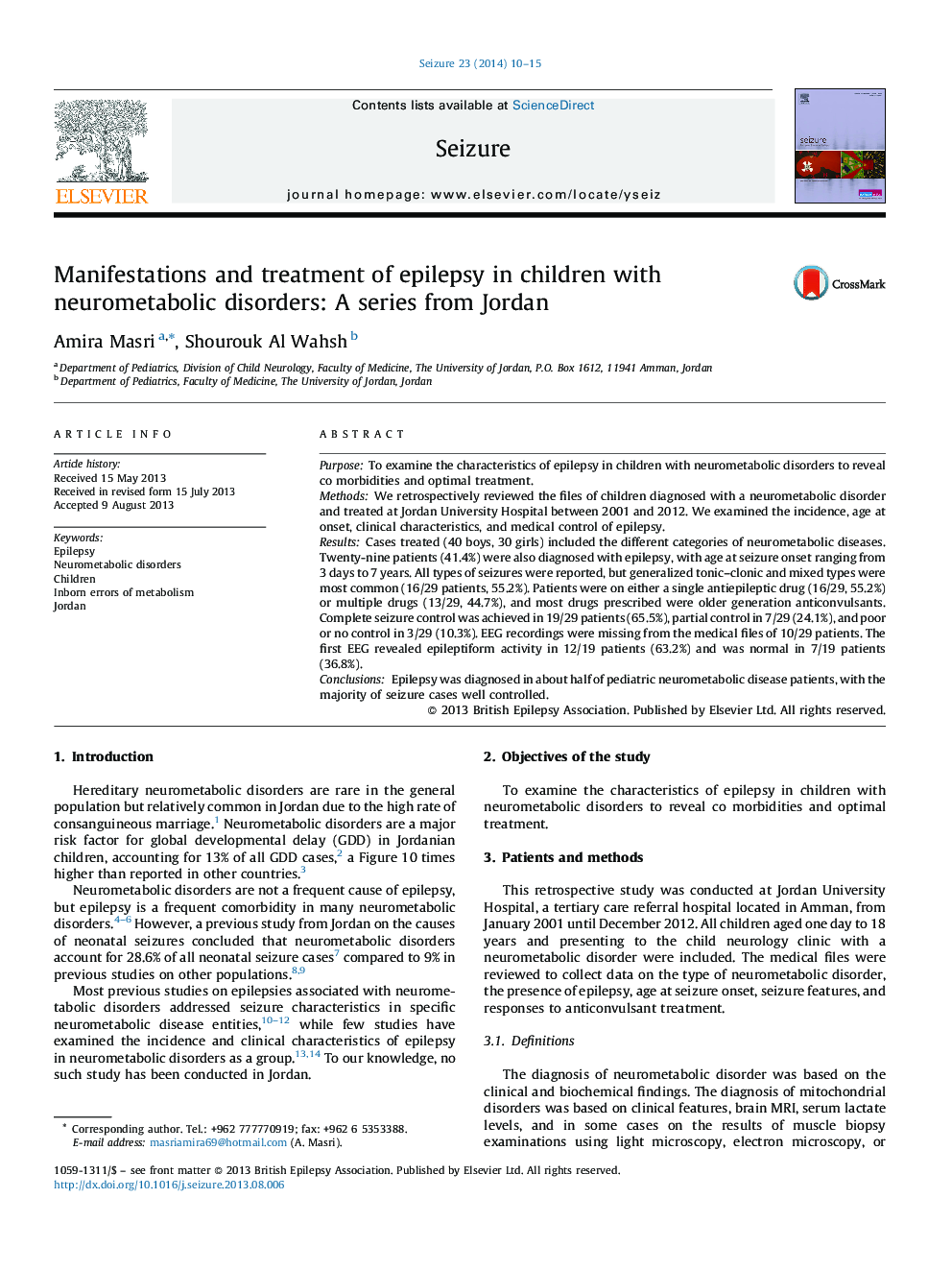| Article ID | Journal | Published Year | Pages | File Type |
|---|---|---|---|---|
| 340453 | Seizure | 2014 | 6 Pages |
PurposeTo examine the characteristics of epilepsy in children with neurometabolic disorders to reveal co morbidities and optimal treatment.MethodsWe retrospectively reviewed the files of children diagnosed with a neurometabolic disorder and treated at Jordan University Hospital between 2001 and 2012. We examined the incidence, age at onset, clinical characteristics, and medical control of epilepsy.ResultsCases treated (40 boys, 30 girls) included the different categories of neurometabolic diseases. Twenty-nine patients (41.4%) were also diagnosed with epilepsy, with age at seizure onset ranging from 3 days to 7 years. All types of seizures were reported, but generalized tonic–clonic and mixed types were most common (16/29 patients, 55.2%). Patients were on either a single antiepileptic drug (16/29, 55.2%) or multiple drugs (13/29, 44.7%), and most drugs prescribed were older generation anticonvulsants. Complete seizure control was achieved in 19/29 patients (65.5%), partial control in 7/29 (24.1%), and poor or no control in 3/29 (10.3%). EEG recordings were missing from the medical files of 10/29 patients. The first EEG revealed epileptiform activity in 12/19 patients (63.2%) and was normal in 7/19 patients (36.8%).ConclusionsEpilepsy was diagnosed in about half of pediatric neurometabolic disease patients, with the majority of seizure cases well controlled.
